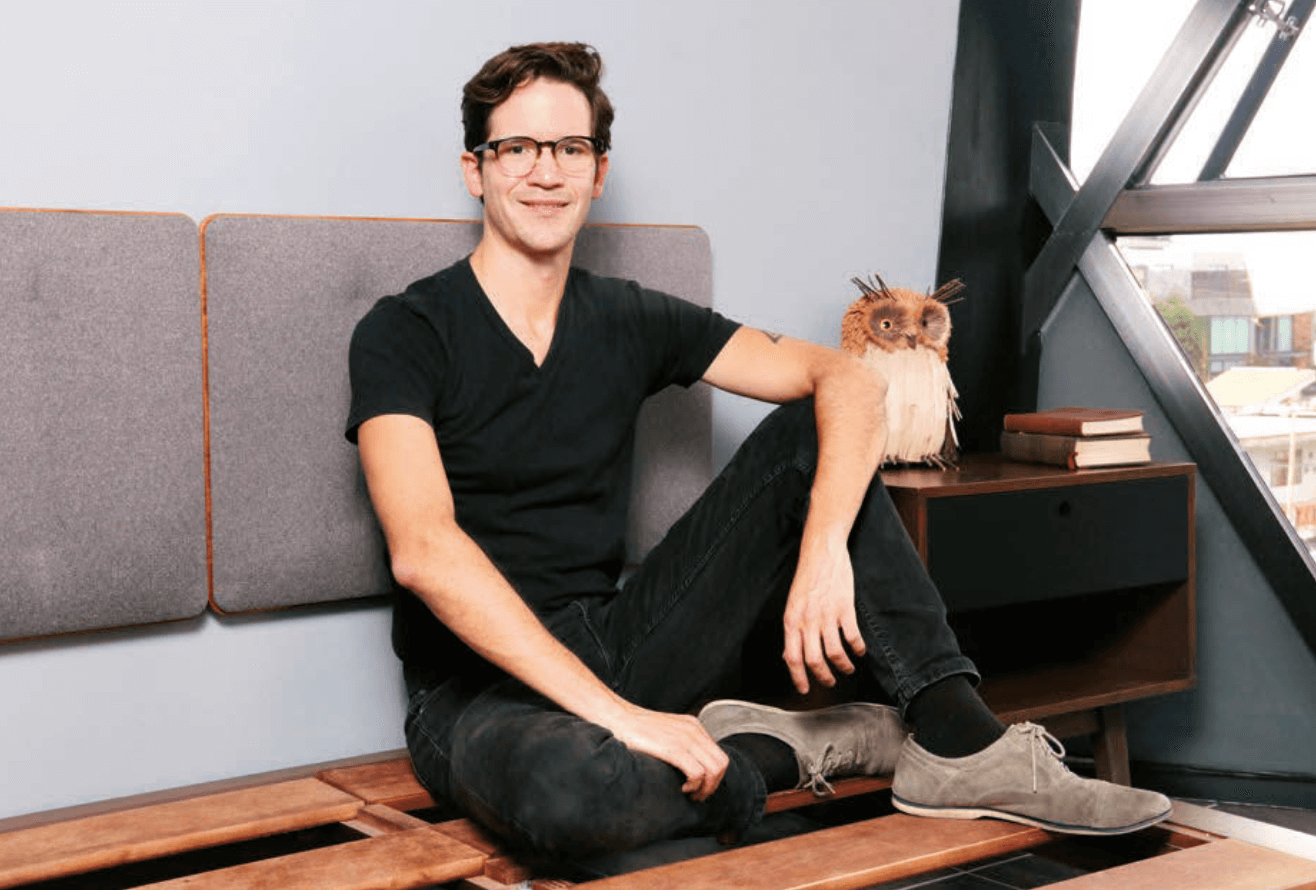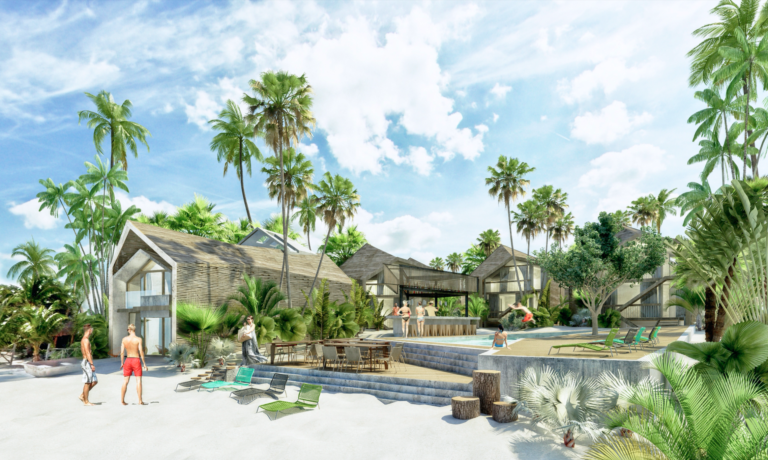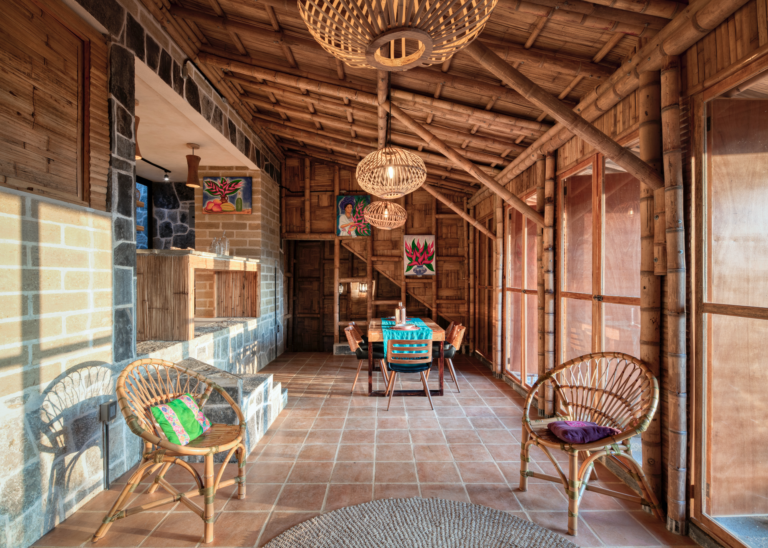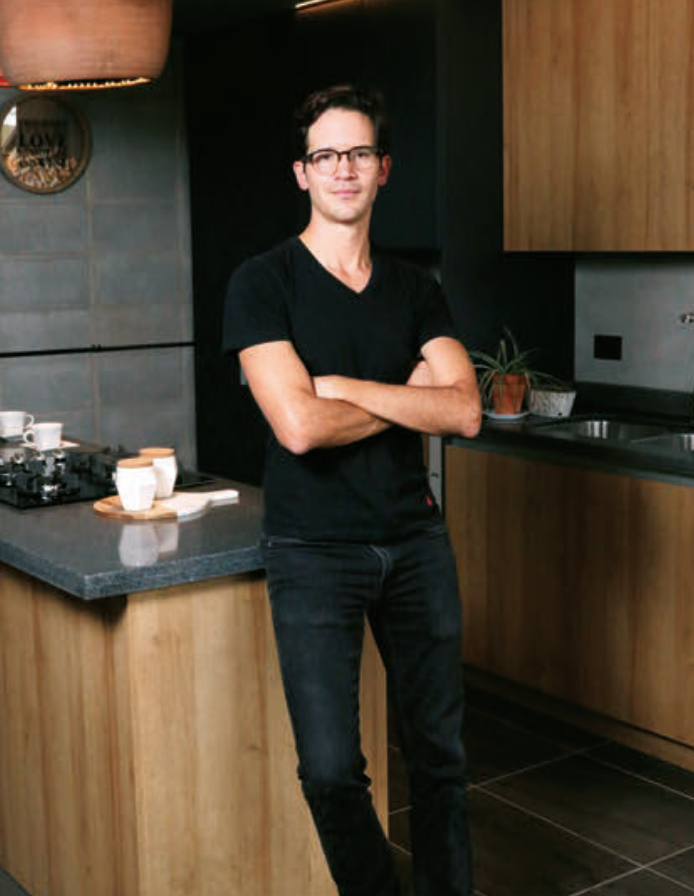
Leonardo Neve, Cafeína’s Founder partner and Design director
Photographs: Guillermo Pérez, for Rostros de Puebla magazine
¿What is architecture?
For me, architecture is a tool to transform the built context into a better place, a means of communication for the generation of spaces in which people can fulfill themselves and feel comfortable and safe. Furthermore, architecture is a means of identification with the most transcendental needs of the human being, such as the search for belonging, affinity, integration with the community and with the environment. Finally, the search for pleasure through experience.

How has the way of doing architecture been transformed in the last decade?
I think the changes have come in 3 directions. The first is an awakening of consciousness towards issues such as respect for the environment, the impact of buildings on cities. Now architects are wondering how their projects affect mobility, issues that were not mentioned before. Other important trends are social inclusion, and the integration of projects into the contexts in which they are located, which have been very positive, but have not yet fully permeated all architects or places.
The second direction is the integration of technology in the design and construction process, through very powerful digital tools such as parametric design software that allow the generation of more complex geometries in buildings, or virtual image generation engines. and simpler virtual tours, which allow you to first design the building on the computer in its entirety, and then build it. In addition to programs such as BIM platforms that help to have better control during the design process and the execution of the work.
The last would be the globalization of architecture through social networks, since knowing through images what is being built in other parts of the world, has promoted the generation of more interesting spaces on some occasions, and on other occasions the generation of bad copies of what is being done elsewhere, and impersonal spaces that do not respond to the context of where they are located.
What other disciplines is architecture related to?
Architecture covers almost all aspects of life, since on average we spend more than 90% of our lives in a building, so it can be related to little-explored links such as psychology through the study of how buildings affect our emotions and thoughts, or gastronomy through the generation of comprehensive culinary experiences in which the space where they operate comprise an important part of the event.
There are other disciplines in which the relationship is much more evident, such as civil engineering, industrial engineering, photography and landscape architecture that complement and enrich the practice of architecture, since many actors participate in the construction industry.
What is the most important thing to consider when doing a project?
For me there are very basic things that every building must have regardless of the type of project, and they are divided into two types, basic needs and transcendental needs.
The basic needs in a project are related to safety and performance. Security ranges from structural security to protect its inhabitants in the event of earthquakes or hurricanes, to prevent access by outsiders to certain areas of the building, or the desired privacy. The operation is related to all the systems that comprise it, such as electricity, drinking water, etc. And the distribution of spaces.
Secondly, the spaces must be comfortable, maintaining good ventilation, a pleasant temperature, a good level of lighting, etc. In addition to generating a positive impact in its context, and the environment, as well as being inclusive with the great diversity of users that it could host.
Finally, the building must satisfy other needs of people in whom little thought is given to architecture, these needs are to identify the personality with the space in which one lives, if one speaks of a house, for example, it should to respond to the tastes of the family, and reflect their personality. It should also be a link to have a better life, promote creativity and promote well-being. In this way it would generate emotions and pleasure for its inhabitants.







How much do emotions intervene in a job?
For me, the generation of emotions is the main axis in the creative phase of the projects, since I believe that it is related to the satisfaction of the needs that I mentioned previously. I think a good building cannot leave the user or viewer indifferent, but must propose a concept that in turn translates into a pleasant and emotional experience that should have the sensitivity to dialogue with the user and with the city.
What is emotional architecture?
The spaces in which we live have a great influence on the well-being of people, there are places where we enter and feel that we must leave immediately, and there are also places where we want to stay for a long time. This is because the design of places in a certain way dialogues with people. For me as an architect, the most important thing is to design those places where people will want to stay and be enjoyed.
What have you specialized in?
Fortunately I have had the opportunity to be able to work on very different projects, such as residential, mixed-use, educational, hospitality, or restaurants in Mexico and abroad, working at very different levels, from social housing to luxury residences, learning a lot about all levels and projects.
Along with my Caffeine Project Partners Diego Vilatela, and Angel Valerio, we have designed more than 100 projects across the country, and are currently expanding to New York in the United States.
What is the current trend in architecture?
Currently I could say that there is no specific trend in architecture, but many, from super technological proposals with very expressive geometries, to very comprehensive social projects that are attracting attention around the world.
However, a trend that strikes me a lot is that of Biophilic design, which means learning from the wisdom of nature in order to replicate it in architectural design.

Which country is a reference in this matter?
England and the United States are countries that have invested a lot in research and development of Biophilic materials and design, however there are countries like India where, without much budget, they have achieved interesting results, in high-quality buildings, of which we have much to offer. to learn.